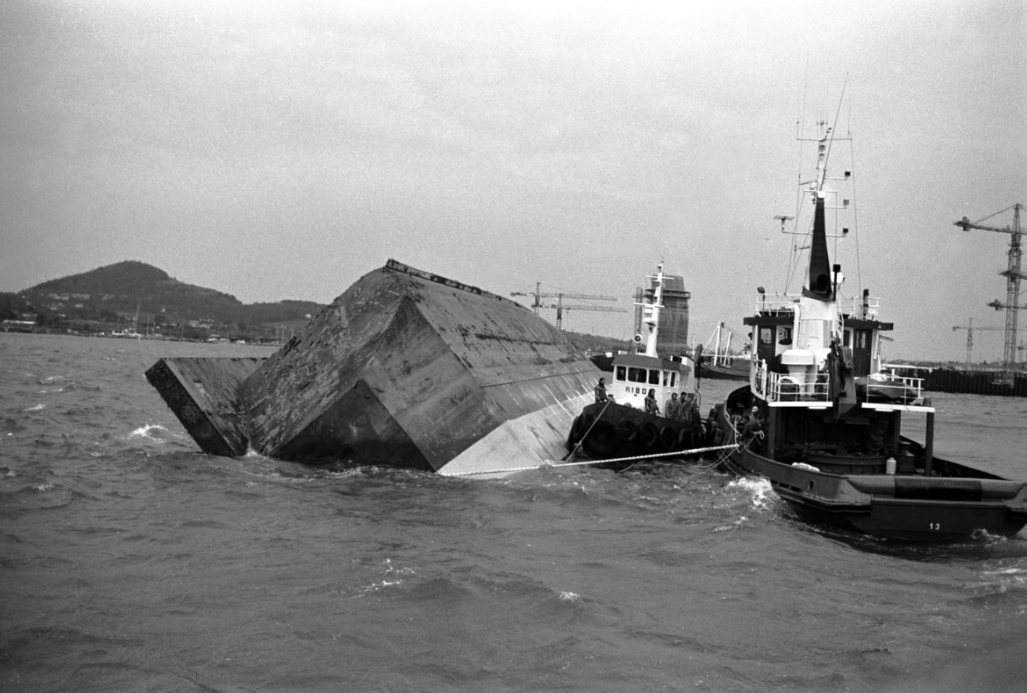The Weekly Reflektion 40/2025
The Concem barge was not covered by maritime regulations as it was not normally manned. This loophole in the regulations led to the construction of a barge with fatal flaws. Irrespective of what regulatory regime your operation is covered by, there is a need for proper design and operational risk assessments.

Jens O. Kvale/NTB scanpix
Are your design and operational risk assessments effective?
On November 4, 1985, the barge Concem overturned at approximately 20:50 hours in Gandsfjorden near Stavanger, Norway. At the time, the vessel was moored to the Gullfaks B platform, which was still under construction. The barge was actively engaged in mixing and pumping concrete for slip casting the cells of the platform. A total of 22 people were on board, 10 of them lost their lives in the accident.
In 1985 there was a construction boom in the Norwegian oil and gas industry that put a significant demand on resources in the Stavanger area. Concem was a specialized barge equipped with two concrete mixing plants, along with storage facilities for cement, sand, and gravel necessary for concrete production. The post-accident investigation revealed systemic issues in both management and operations.
The ballast operators had dual responsibilities, managing ballast operations and handling the cement transport system. The latter involved moving cement from the cargo hold into the production system. This was achieved by pumping compressed air under canvas panels placed beneath the cement. While this method effectively aerated the cement for transfer, it caused the material to expand and take on a liquid-like consistency. Aerated cement is inherently unstable and unpredictable, but operators were not trained in how to safely handle it. Mismanagement of this process directly affected vessel stability. The cement transport, combined with poor ballast management, led to a significant cement shift from port to starboard in the aft cargo hold. This mass movement caused the barge to capsize.
The Commission that investigated the incident determined that no single individual could be blamed for the accident. Responsibility lay with Norwegian Contractors, the owner of Concem. The company was faulted for inadequate training, poor operational oversight, and a lack of competent supervision.
Furthermore, the Commission highlighted regulatory gaps. Stationary, unmanned barges like Concem, which often serve as work platforms in inland waters, fell outside the coverage of traditional ship inspection regulations concerning stability. This absence of oversight left such vessels vulnerable to accidents. In response, the Commission proposed new regulations to strengthen safety standards for similar barges. They recommended that stationary, unmanned barges used for work lasting more than a day must demonstrate stability equivalent to manned barges. In addition, operators or owners must appoint a responsible, qualified individualtasked with continuously ensuring compliance with stability requirements and verifying crew training. They also recommended that control rooms should be located above deck with clear visibility, and panels assembled for remote operation of ballast systems. Special vessels for cement transport typically have inspection windows to allow operators to observe cargo behaviour during loading and unloading. Concem lacked such windows, depriving operators of vital situational awareness. Future bargeswere required to be equipped with these features to prevent similar incidents.
The Concem disaster was not the result of a single error, but rather a chain of systemic failures. These were inadequate training, lack of supervision, flawed ballast management, improper handling of aerated cement, and insufficient regulatory safeguards. Proper design and operational risk assessments could have revealed these failures and prevented this tragedy.
